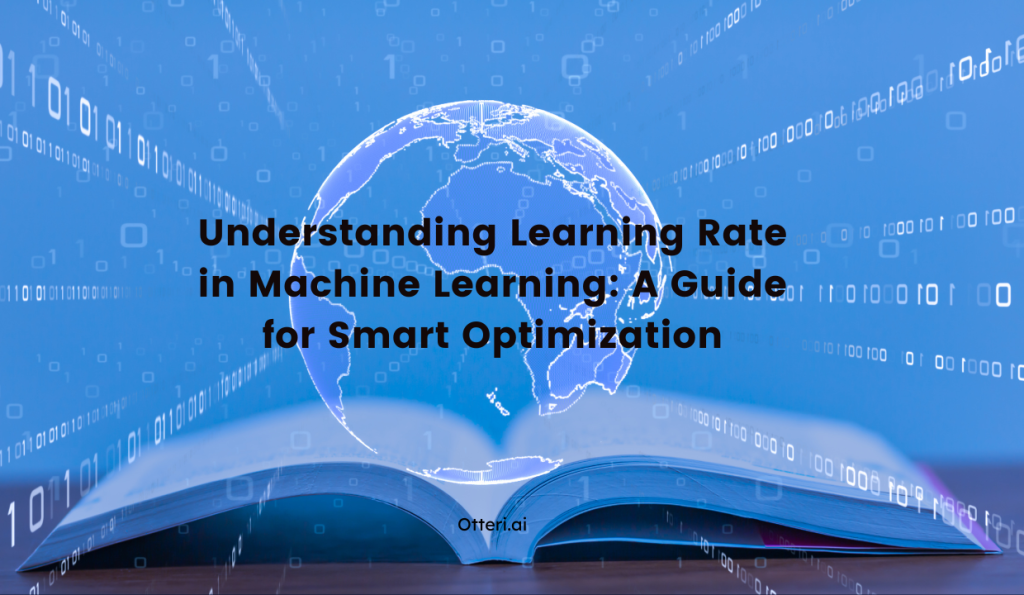
Machine Learning: Why It Matters and How to Choose the Right Value. Learn how it impacts model training, convergence, and performance. In the world of machine learning, numerous hyperparameters influence how models learn and perform. Among them, the learning rate stands out as one of the most crucial factors. It directly affects how quickly and effectively a model can learn from the data. Choosing the right learning rate can mean the difference between a model that converges to high accuracy and one that fails to learn altogether. This article explains the fundamentals of learning rate, why it matters, and how to optimize it for better machine learning performance.
The learning rate is a hyperparameter that controls how much a model’s weights are updated during training. It determines the size of the steps the model takes toward minimizing the loss function. During training, optimization algorithms such as Stochastic Gradient Descent (SGD) update the model’s weights based on the gradient of the loss function. The learning rate acts as a multiplier for these updates. A small learning rate leads to slow learning but can help achieve more precise convergence. A large learning rate speeds up training but risks overshooting the minimum loss or diverging completely.
Understanding the role of the learning rate is essential because it has a direct impact on the model’s convergence speed, stability, and final accuracy. A learning rate that is too high may cause the model to oscillate or diverge, while a learning rate that is too low can make training painfully slow and result in suboptimal performance.
Choosing the right learning rate depends on many factors including the dataset, model architecture, and optimizer. One common approach is manual tuning. Start with a small value like 0.01 or 0.001 and observe the performance. Another effective strategy is to use learning rate schedulers which automatically adjust the rate during training. Cyclical learning rates can also be helpful by varying the learning rate between a minimum and maximum value, encouraging better performance. Additionally, tools like a learning rate finder can help identify the best range for your specific use case.
Different optimizers typically work well with different learning rates. For instance, SGD often uses values between 0.01 to 0.1. The Adam optimizer works well with 0.001 to 0.0001. RMSprop generally uses 0.001, while Adagrad typically uses 0.01. These are starting points and should be tested with your model and dataset.
Let’s consider a few learning rate scenarios to better understand their effects. A very low learning rate, such as 0.00001, leads to very slow training. The model might never reach a good solution. A high learning rate, such as 1.0, may cause the loss to fluctuate or even increase, indicating divergence. A moderate value like 0.001 usually allows the model to converge steadily, achieving good accuracy.
Modern frameworks like TensorFlow and PyTorch offer learning rate schedulers to help adjust the rate over time. Common techniques include step decay (reducing the rate after a set number of epochs), exponential decay (gradually decreasing the rate), and reducing the rate on a plateau (when performance stops improving). These techniques help the model learn efficiently early on, and fine-tune as training progresses.
To use the learning rate effectively, follow a few best practices. Start with a small value and increase if needed. Monitor the loss curve for signs of instability or plateaus. Combine with optimizers like Adam for more adaptive learning. Consider using warm restarts during long training sessions to give the model periodic boosts in learning.
Interestingly, a high learning rate can sometimes help prevent overfitting by not letting the model settle into sharp, narrow minima. This can lead to better generalization on new data. However, relying solely on learning rate for regularization is not ideal. It should be paired with other techniques like dropout, early stopping, and proper validation.
Let’s look at some frequently asked questions. If your learning rate is too high, your model may fail to converge or experience exploding gradients. The training loss may even increase. Yes, the learning rate can be changed during training—this is called learning rate scheduling. There’s also a difference between fixed and adaptive learning rates. Fixed rates stay constant throughout training. Adaptive methods like Adam adjust the rate per parameter automatically for better results.
The learning rate is more than just a tuning parameter—it’s the heartbeat of your model’s learning process. By understanding how it works and how to adjust it, you can dramatically improve training speed, model accuracy, and overall performance. Whether you’re a beginner or working on advanced systems, mastering the learning rate is essential to successful machine learning.
Want to see how machine learning hyperparameters like learning rate influence model training in real time? Try Otteri.ai today and experience smarter AI optimization tools built for developers, data scientists, and businesses alike.